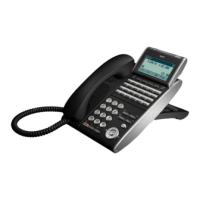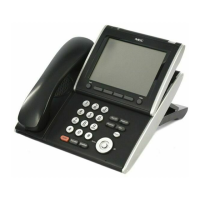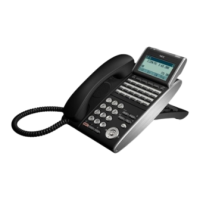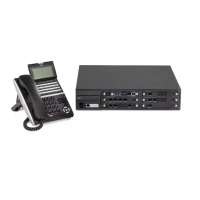• Pauses can be entered in the dial string of a DSS/One Touch key. The pause is entered as P in the
dial string and causes the system to wait three seconds before sending the rest of the digits that
follow the P (pause). Multiple pauses can be entered.
• The @ can be entered in the dial string of a DSS/One Touch key. The @ only applies to ISDN and
Intercom calls. When using the @, the system waits for the destination to answer (answer
supervision), and then sends the rest of the digits.
• Entering a P (pause) in a DSS/One Touch dial string can be used for CO calls, Intercom calls, or
after the @ for ISDN calls.
• DSS/One Touch keys can be used for one-touch transfer.
• DSS keys can distinguish whether the telephone is set for DND/Call Forward All Calls of if the
telephone is off-hook.
• When a Ring Group call rings a station, a BLF Indication for this station shows idle or busy based on
Class of Service option (20-13-49).
• All features programmed under one touch keys are still subject to class of service restrictions.
• If you change the extension assigned to a port in PRG 11-02, the line key programming does not
follow. However, if you move the extension using the Station Relocation Feature, the line key
programming does follow.
• In order for a station to retrieve a held ICM call, the station must have an ICM key assigned in 15-07
(
00).
Default Settings
The first 12 keys on a telephone are Line keys (e.g., key 01 = line 001). The remaining keys are
unassigned.
System Availability
Terminals
All Multiline Terminals
Required Component(s)
None
Related Features
Abbreviated Dialing/Speed Dial
Direct Station Selection (DSS) Console
One-Touch Calling
Guide to Feature Programming
Program Number
Program Name Default
15-07-01 Programmable Function Keys Refer to Programming Manual.
20-06-01 Class of Service for Extensions All extension port = Class 1
SL1000/SL1100 ISSUE 2.0
1-572
Programmable Function Keys
P

